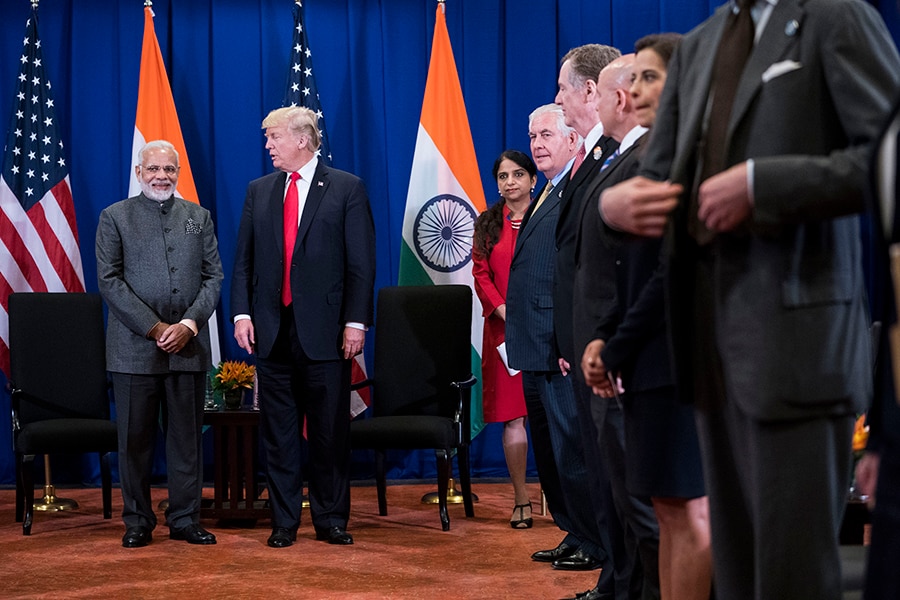
Modi's problems at home overshadow Trump's latest trade threat to India
On the first day of Modi's second term, the White House terminated a special trade status for India, and the Indian government had reported that the country's economy was growing at the slowest rate in five years, and unemployment was at a 45-year peak
 President Donald Trump participates in a bilateral meeting with Prime Minister Narendra Modi of India at the 31st ASEAN Summit in Manila, Philippines, Nov. 13, 2017. Trump ended India’s special trade status, hoping to jolt stalled trade talks. But the prime minister is focused on India’s sluggish economy.
President Donald Trump participates in a bilateral meeting with Prime Minister Narendra Modi of India at the 31st ASEAN Summit in Manila, Philippines, Nov. 13, 2017. Trump ended India’s special trade status, hoping to jolt stalled trade talks. But the prime minister is focused on India’s sluggish economy. Image: Doug Mills/The New York Times
President Donald Trump has made India the latest target in his widening global trade war, but the country’s newly re-elected prime minister, Narendra Modi, has bigger problems to address.
On May 31 last month — the first day of Modi’s second term, and the same day the White House terminated a special trade status for India — the Indian government had reported that the country’s economy was growing at the slowest rate in five years and that unemployment was at a 45-year peak.
Modi and his new ministers responded with two acts that illustrated their top priority: reinvigorating the Indian economy.
The first act of the new Cabinet was to extend a program of cash handouts to cover 20 million more farmworkers — a sector Trump wants to open to more competition from American growers. The second was to create a pension system for small traders, a group battered by competition from India’s leading e-commerce sites, which are owned by American giants Amazon and Walmart.
The termination of the special trade status, which had eliminated tariffs on a small portion of India’s exports to the United States, had long been expected. But like Trump, Modi has embraced nationalist language and policies. Neither leader is likely to bend soon, and the Indian government made clear that it would put its own country’s interests first.
©2019 New York Times News Service







